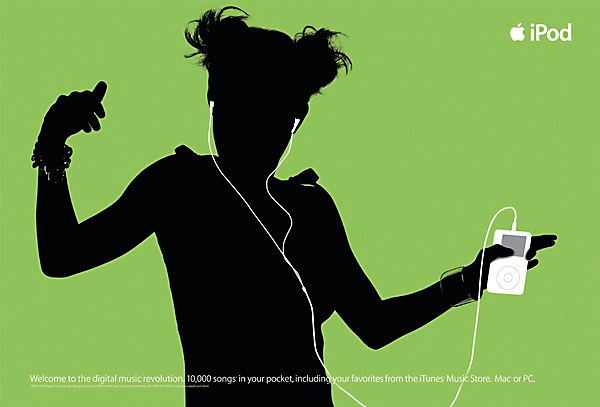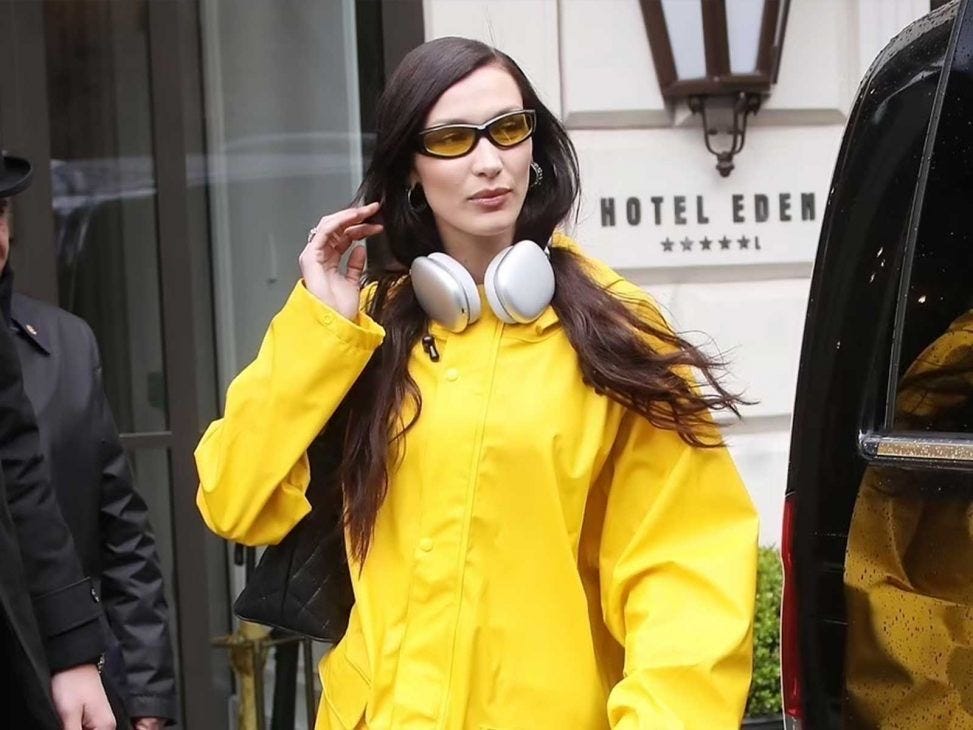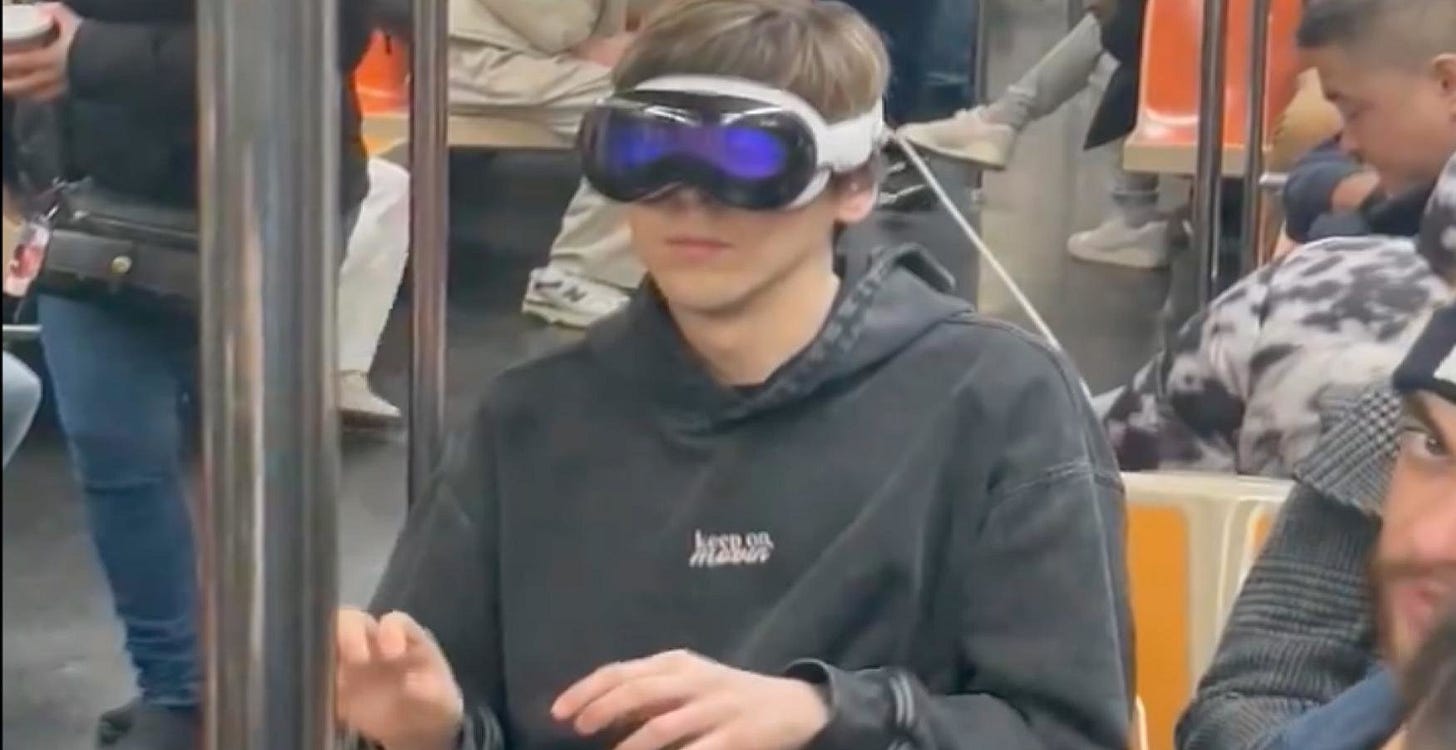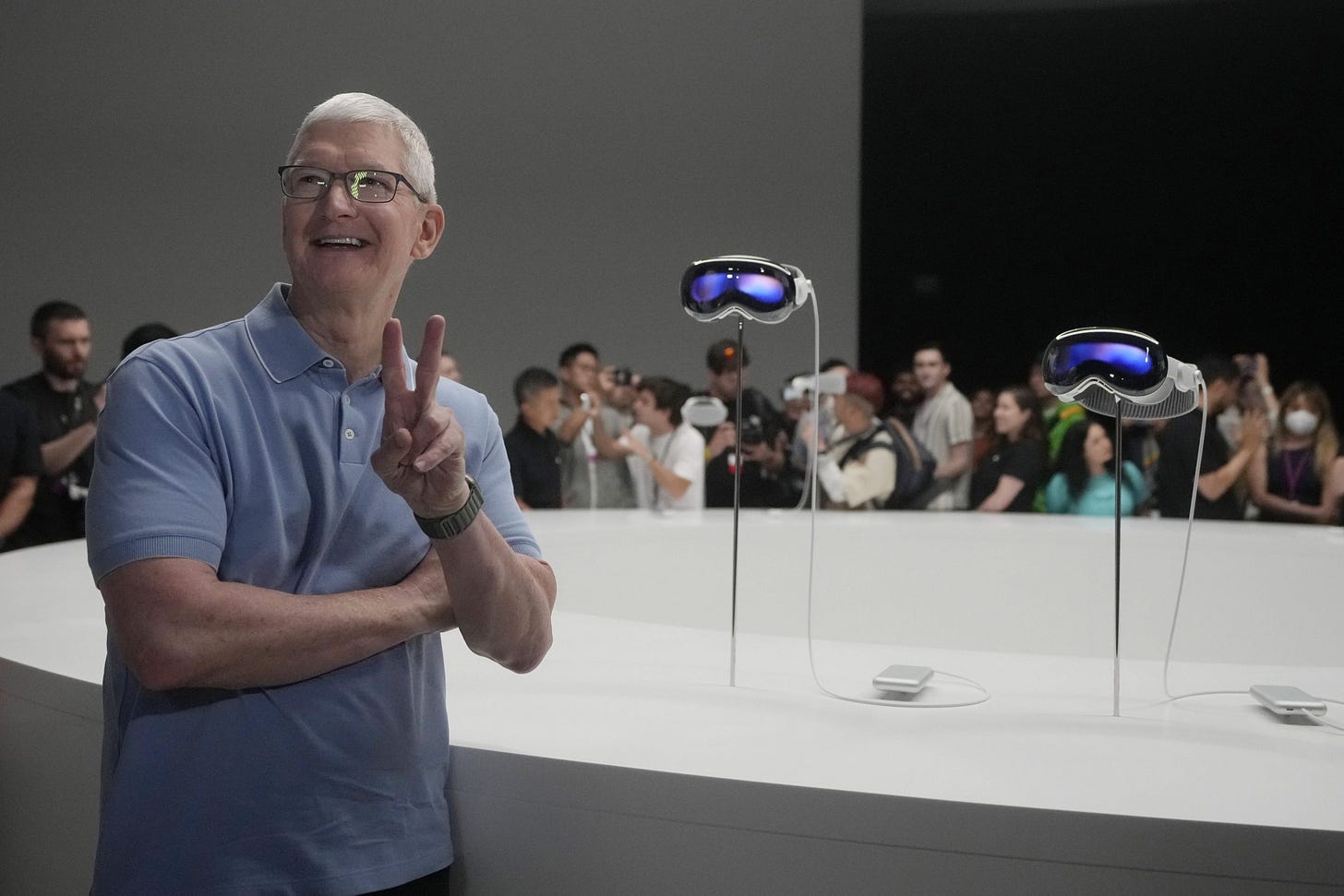All the Songs Are Playing At the Same Time
Apple Vision Pro-ification, Folk Art, and Reclaiming Mixed Realities
enter consciousness: Apple Executive
meeting topic: Augmented. Mixed. Virtual. Reality. Product Name?
location: Executive Board Meeting Product Presentation, Silicon Valley. big room
*Large Man in Suit, barges in, exasperated, Flips table*
One phrase.
“Apple Vision Pro.”
the iPod, the iPhone, Apple Pay, Apple Watch, white earbuds, Apple Vision Pro. Apple doesn’t deal in product, they deal in process. Ways of being. Aesthetics, lifestyles.
They have done this quite successfully for a few decades. It’s the sleek approach to business the Elizabeth Holmeses of the world dream of achieving. Making a product cool is one thing, but making a product define what coolness is quite another. The fuel in Apple's branding engine is style, status, wealth, a courtside iPhone scroll while wearing those big red boots, an A-Lister celeb wearing Airpod Maxes at Erewohn, a businessman on an iPad in first class. Green bubble, no. Blue bubble, yes.
But can they pull this off with Those Goggles? The skeptics say: no. It doesn't do anything but make you look like a butthead, they explain. Kinda like those big red boots. And they are right. But when it comes to Tech, what does being right have to do when anything?
Many say since ol’ Silicon Saint Steve-o passed (RIP) Apple has made many questionable product moves. But still, either because of quality or by virtue of authority, Apple remains on top. Buttheadedness or not.
But remember, what makes you Look Like A Butthead changes over time.
Lest we forget the history of the original immersive device, the personal headphones.
The public, at best, was skeptical, and at worst, hated them. An example from Professor and author Paul Roquet:
Headphones for use with home record players were also on offer in the 1920s and 30s, but raised similar concerns about their isolating influence on the domestic scene. In the private sphere, headphone listeners at this time were also often the male “head of household,” asserting social control over domestic space and trying (not always successfully, judging by the audio magazine commentary) to bend the surrounding acoustics to their will and to their hobby. Headphone stigma in this context often centered on the rest of the family’s feelings of being left out. The editors of the Living Stereo anthology note how home headphone use in the US at this time was often perceived “to silence conversation in the home and exclude others from the radio experience,” even giving rise to gendered figures like the “wireless widow.” One 1924 letter to the editor of Radio Broadcast describes the struggle of one “wireless widow” forced to “sit mum” while her husband was occupied by his headphones, “consoling herself with a book, or solitaire, having at least the chill comfort of his physical presence, though his soul go marching on” (quoted in Théberge, Devine, and Everrett 2015, 23–4).
(note: if you are interested in this topic, check out Roquet’s book The Immersive Enclosure)
Some still dislike headphones, of course. But they're normal now. Normalized. Worshipped in some contexts. Even liberatory in others. And people don’t blink twice at folks wearing them in public. Usually
Of course, just because cynicism has faded doesn’t mean something is good or that the original criticisms were unfounded. But it does evidence that New Tech can stay despite public cynicism, or that Tech can change, even when it seems it won’t, and that technological change is often more incremental, and stranger, than it seems.
The question is whether VR/MR will see the success of headphone technology, or if it's just a step too far into the deep pockets of Silicon Valley, and if it’s a bubble a la NFT apes. Who can say!
Often I've noticed, What people are really saying when they say, "VR is stupid," is monopolistic control of the Tech Industry by Stanford grads who believe in eugenics is stupid. Not that the two statements are mutually exclusive. But one concern is more pressing and consequential than the other. I don’t really care about the buttheadedness of VR so much as the political economy surrounding it. What visions are we really seeing when we put on that headset? What are we looking at, how are we looking at? And who really benefits from me looking a butthead? And where are all these plastics and minerals coming from? By the way, has anyone else seen that Juul documentary? It’s a fascinating story. A Silicon Valley dream shattered into a million pieces then put back together to form an Elf bar.
Big questions, I know.
Subject Change
When the covid lockdowns first started people in America kinda took it seriously for a short time. They were inside watching Tiger King. Remember in one episode a worker gets mauled by a tiger? Then the Tiger King himself saunters into the gift shop to announce they’ll be closing for the day, but don’t worry, you’ll get a voucher.
After watching that one I walked around abandoned neighborhood streets, rejecting the sidewalk in favor of smack-dab-in-the-middle of the road, I had my headphones in and listened to “All ____ Songs Playing At The Same Time” videos on YouTube.
The sonic chaos and novelty produced by playing all the songs from the Hamilton soundtrack simultaneously might surprise you. It’s like dipping your head into a rich broth of non-time. A swirl of auditory slime that coats your ear canal, slowly dripping onto your eardrum, vibrations of Lin-Manuel Miranda phantasms infecting the soft tissue of your brain. All of this happens in nanoseconds. Nonlinear content onslaught. It’s not scary but it’s glancing in that direction. More uncomfortable than anything else. But interesting. Like hearing the music tastes of the Establishment Democrat Dynasty collapse inward on itself into a swirling pool of terrible talk show appearances. Or something
Lots of videos like these. All Beatles songs at once is another good one. My Chemical Romance too. You’d expect all the results to sound more or less the same, but each has its own character and flavor, each a blurred, malleable alloy, each one a sort of gestalt composition, the shadow of listening. Sometimes you can even recognize specific songs floating in and out. Like they’re ghosts or something. The haunting as Derrida might point out. But who has time for that guy.
You can find the same sort of thing in visual form. All Dreamworks movies playing at the same time, for instance. Or all Simpsons episodes at the same time. Or my favorite, all all the same time videos playing at the same time.
The composers of such content remain more or less anonymous. It’s a folk practice.
Folk art, after all, rests on the premise of authorlessness, a habitual making of communion, a making of the commons, a performance that comes from nowhere but ends up everywhere. Like pottery. Blankets. Screen savers. Ringtones. Video game music? No center, just an orbit.
Internet content is like that, no? When a meme or Tiktok trend goes viral, its first molting sheds the source — the author — and leaves it as dead skin. The Viral can’t emerge without this molting. Well, it happens sometimes. People try to watermark their memes, for example, or demand “credit.” Which is both silly and futile, because it doesn’t matter. Hardly anyone will look up your page, much less find it more than mildly impressive that you (gasp) Created That. To do so betrays what a meme is, and how it functions: as a source of community, not really as a work of art, which would require an artist, or artists, i.e., the original poster(s), anonymous or not. No, a meme is Western Art turning inward on itself. Rejecting its own essence, as it were, rejecting the neoliberal impulse to commodify, individualize, and product-ify where commodification, individualization, and product-ification isn’t needed. Same goes for viral videos, which, though they often feature people, orbit anonymity, the human figures usually nameless. Tiktoks don’t have imdb pages for a reason.
Here in the so-called West, folk art gestates into Art when the method is adopted by, and perhaps refined by, the Artist. It’s the way things go. The Art World. Aesthetic evolutions, revolutions. The cynical among us might view this repackaging-as-Art as a Death of folk art, or commodification, exploitation, capitalization, appropriation, a selling out. The optimistic might view it as a platforming, an inspiration, a rapture, a transforming, a becoming. Or maturation. Me, I don’t know what is going on
Oh, that reminds me, there’s a fine line, or, rather, a symbiosis, between the avant-garde and folk art. Because the beating heart of folk art is that anyone can do it. And the beating heart of the avant-garde is also that anyone can do it. And perhaps that everyone should do it. No Rules, Just Vibes. Theoretically. That’s why it’s so silly when people clown noise music, right? “Ah me, that’s just noise, it takes no talent,” and it’s like, No, Duh, that’s the point, we’re paying attention to the conditions that produce the artwork here, not the work itself, get with the program, and hey, you should try to make this stuff sometime, it’s loads of fun, overcoming the tyranny of virtuosity, you know, the hegemony of quality. By the way, have you heard of DAWs, the guitar of our generation?
Anyways, why am I saying all this. Point is, in the midst of the Digital, in the midst of the Apple Vision Pro projecting the Digital Onto All Things, in the Midst of Everything Going On In The World Right Now (*gestures broadly*), people are smashing stuff together, subverting, mushing content, juicing its form, twisting it, maligning it, spitting it out, experiencing it all at once, nowhere, anywhere, doesn’t matter your device, it’s just there on the platform waiting for you.
The practice of online-making skyrocketed post-2020 as more people were thrust into The Web for leisure and labor. Memes, live streams, Zoom meetings, Tiktoks, all of it was peaking. And as The Web seeped out into whatever Wasn’t Online Before But Is Now, so too did a widespread sense of the unease that comes with The Ability to Program Anything. Two and two makes: more digital folk art strangeness.
Thus emerges, fully, the Time of the Mixed Reality. Software interface everywhere. Doordash, Fitbit, Thermostat, Venmo, Automatic Pet Feeder. And here comes the Apple Vision Pro: Desktop smeared on walls. Keyboards on empty tables. Movie screens floating mid-air. A digital butterfly landing on your hand. Reality and unreality, everything playing out simultaneously. Time, the digital, the real, all blurring together into incoherence, like Every Song At The Same Time.
In reality Apple Vision Pro isn’t doing anything new, or that new — Mushing Together The Digital And Reality, one might say — so much as repackaging what’s already here into something more concise. And more expensive. A class signifier and rechargeable portal all in one, a tradition since the dawn of the personal computer! Evolutions
Really, the Apple Vision Pro is the logical conclusion of an Era — the pandemic era, the crises era, The End of it All era, whatever you want to call it — which saw the blurring of “The Digital And The Real,” an Era that rendered any distinction between URL and IRL fully extinct, an Era that saw the mega-growth of corporate digitization, the encroachment of the Neoliberal Network into every sphere of life. The internet used to be a beach we could visit, but now it’s the water we swim in, and Apple is now here to provide a set of gills.
But will it stick? One day, will we all wear Apple Vision Pros, all at the same time? Like Headphones? If Apple can’t make it happen, no one can, some say. But they’re rolling off the factory line as we speak. Piping hot. Love it or hate it, more people are wearing them. Like T Pain! A tech guy, who knew.
Maybe it’s the Tech we deserve. But is it the Tech we’ll keep?
So what does Art do with all this? Specifically experimental art, the all-knowing Avant-Garde, the litmus test of futures and possible futures and lost pasts and beyond-heres? Or something
Historically, art is very good at wading through the incoherence, the absurdity produced by digitality and digital cultures, the interfaces, the products, the aesthetics they produce, and whatever else. Not necessarily emphasizing computers themselves, mind you, or algorithms, but exploring the conditions and strange realities they’ve produced. Making us notice them. Art that plays with the tension of uncertainty, strangeness, humor, irony, post-irony, earnestness, and any and all of the affects enveloping our consciousnesses in a world of digital projections and mapping.
But who are the artists doing this right now? I’m glad you asked! Here’s some stuff I’ve been into recently. In the audiovisual realm
Madjestic Kasual’s Youtube Channel type beat
Theirs, the scenes they’re in, and so many others, is a practice that seeks to reclaim and articulate a mixed reality, expose it, make it raw, and leave the viewer to cook it. Check it out, why don’t you? Go down an algorithm rabbit hole, why don’t you? Observe the distorted reflection of the world you’re in, it’s what they would want.
Now as you listen to this experimental music I know what you’re thinking. All these sped up songs, these chopped up bits, this chaos, can’t anyone do this? Yes, they can, and they should. And these artists noticed it’s worth doing. And they made it compelling. Aren’t you compelled? It’s CALLED the avant-garde. It’s CALLED folk art.
Conclusions
In a word, within the aforementioned musics, within our Mixed Reality, within VR, within the Apple Vision Pro, it is my stance that all the songs are playing at the same time. Discursive, fleeting, blurry, colorful. Genres discarded in favor of moods, production converses with persona, songs float along to listeners in the deep, glitching, Algorithim estuaries where upload meets culture, new releases become the biblical pamphlets in the Church of the Feed, songs complement visuals and visuals complement songs, everything projected onto everything else, folk art becomes art and art becomes folk art, everything is going, and going, and going, time flattens into simultaneity, and the Timeline is no longer a Time line but just a Line line, darting this way and that, governed by its own logics that we can never hope to understand, but can only follow,,,,
Tim Cook walks into the board meeting.
Except you can hardly see it’s him because he is wearing Those Goggles. and Airpods. He’s a bit late but he looks so cool. And is that Ye behind him? “Hold on,” Tim mumbles, “I gotta… gotta…” He flicks his hand in front of him, apparently pausing something, or perhaps….? “I was… It was…. Every song on Apple Music… at… at the same time….”





















